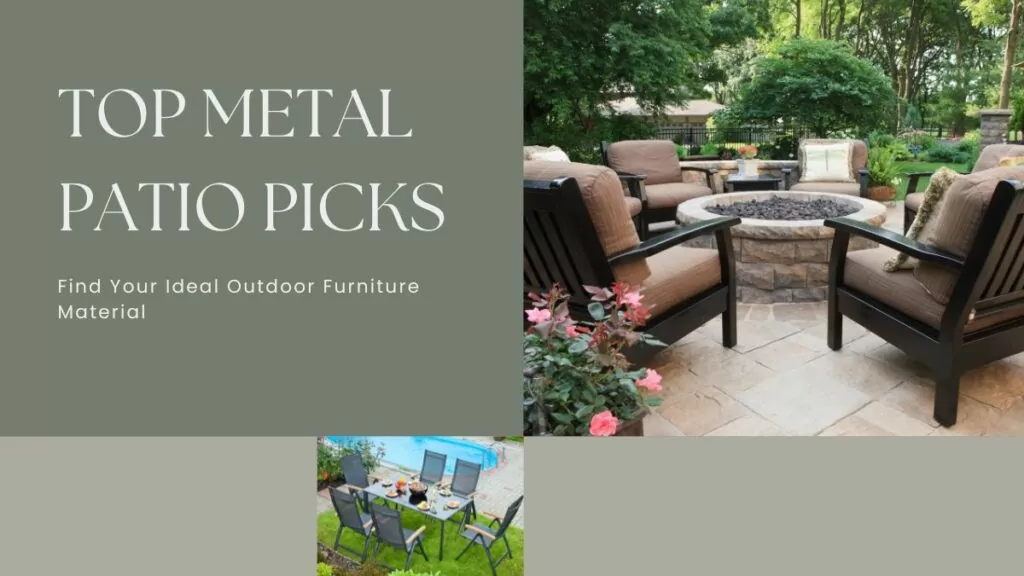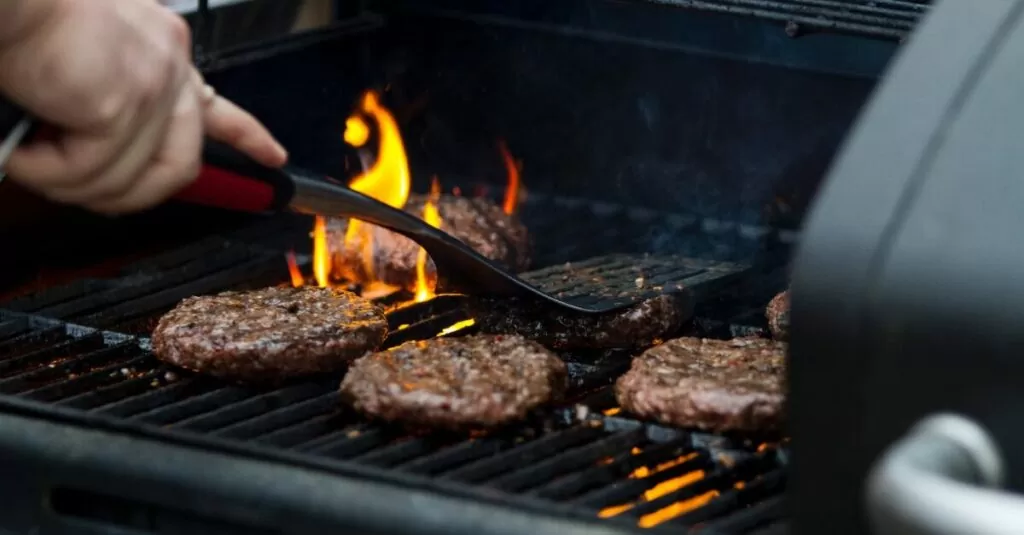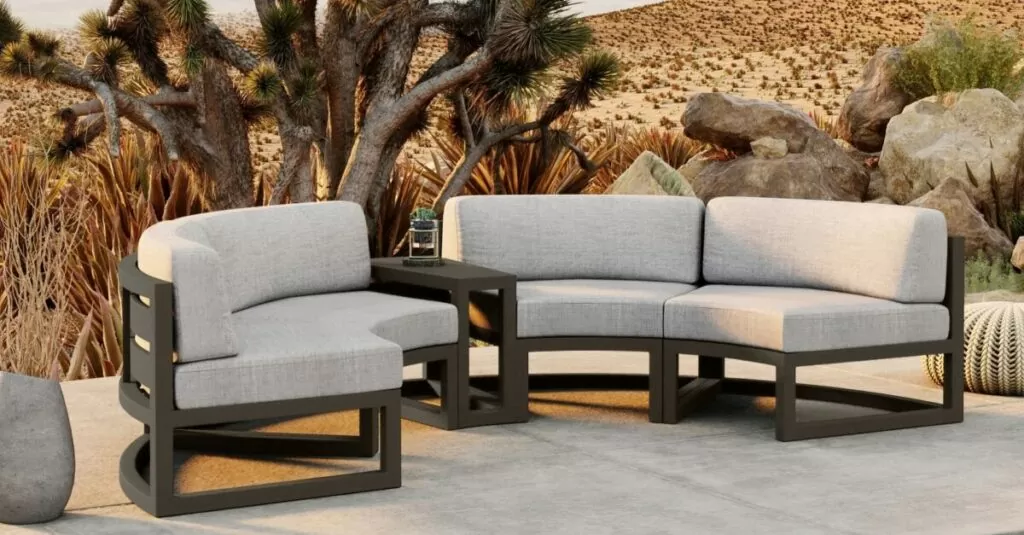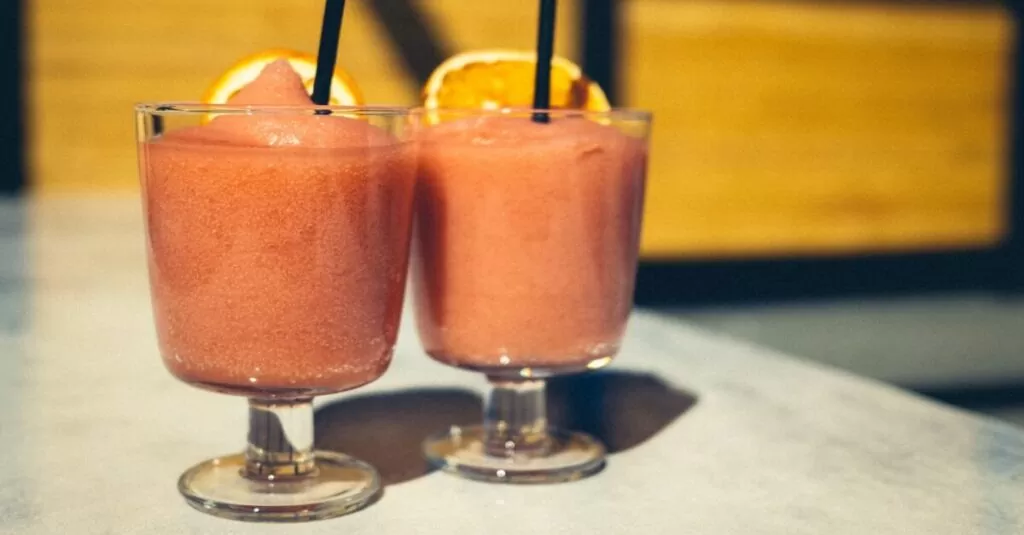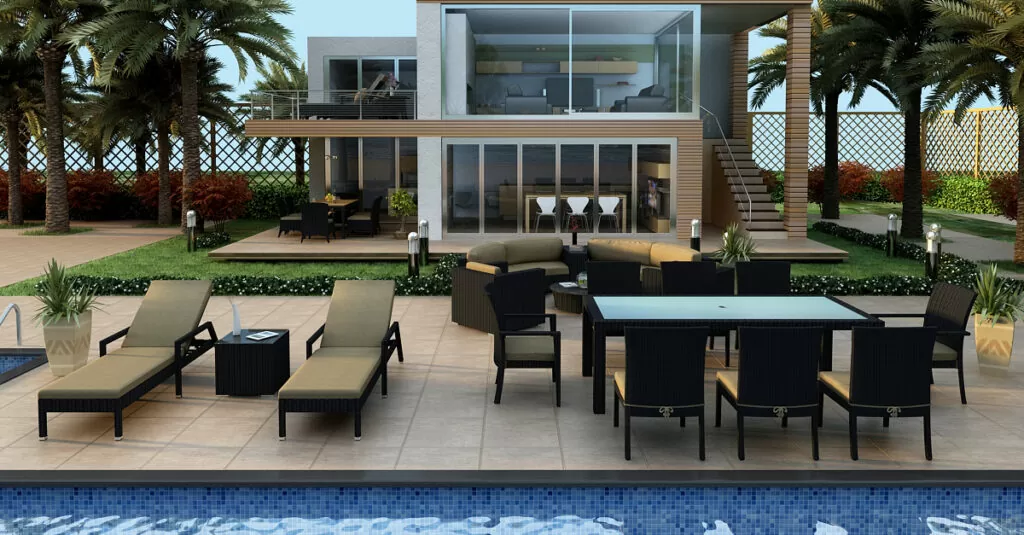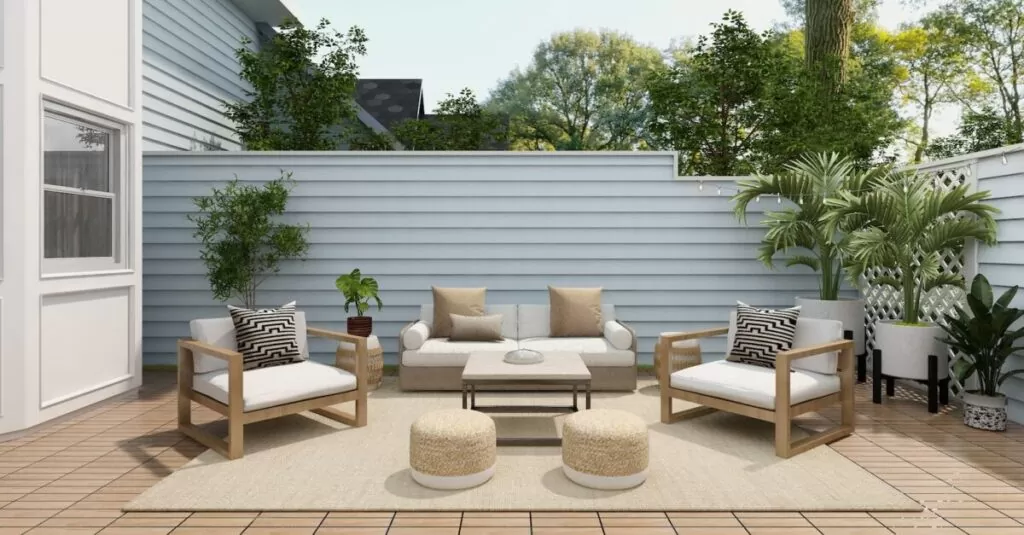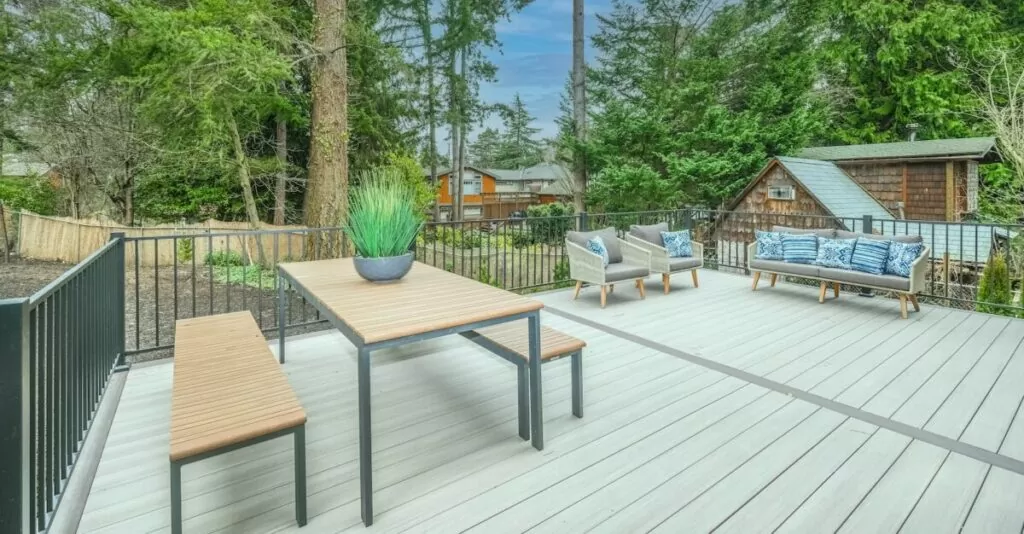What Metal Options Are Available?
When choosing metal patio furniture, there is a wide variety of materials available in the market today. It is important to understand the different materials and their characteristics so that you can make the best selection for your desired outdoor space. The most popular metals for patio furniture are aluminum, wrought iron, steel, and stainless steel.
Aluminum is an ideal choice for many outdoor applications due to its light weight, strength, and durability. It is also resistant to corrosion and rusting, making it an attractive outdoor solution. Wrought iron is another popular option due to its strong material composition and tasteful look. Steel offers good strength and weight, as well as good corrosion resistance. However, variations in quality between different steel materials can cause problems with metal fatigue or cracking over time.
Finally, stainless steel is a premium-priced option praised for its durability, temperature stability, and low maintenance requirements compared to other metal options. Its higher resistance to corrosion is particularly helpful in areas with high moisture levels. Stainless steel patio furniture will require some additional upkeep such as wiping down the surfaces regularly to prevent fingerprints and rust build-up but overall it provides superior longevity performance with minimal effort.
As you consider the best option for your outdoor space, take into account all of these factors when weighing your metal choices. Up next we will discuss stainess steel in greater detail so that you can decide if this type of material may be the right fit for you.
● Studies have shown that aluminum is the most durable and weather-resistant metal for patio furniture.
● Steel and wrought iron are strong, but can rust over time when exposed to moisture and humidity.
● Wrought iron patio furniture is usually powder coated for better durability, but is still vulnerable to rust when scratched and at joint and welded areas.
Stainless Steel

Stainless steel is another excellent option for metal patio furniture. It is non-corrosive, although it can require more maintenance compared to other metal materials. Stainless steel is a good choice for humid climates, as its rust-free properties are ideal in such settings. Additionally, stainless steel doesn’t need to be sealed or painted, making it relatively low maintenance compared to other metal options.
One of the biggest benefits of stainless steel is its remarkable durability. This heavy-duty material can withstand all kinds of weather conditions and won’t easily scratch or dent, even over the years. Furthermore, with regular cleaning and polishing, stainless steel can last indefinitely and keep its beautiful shine for years.
On the flip side, stainless steel furniture can be quite expensive depending on your budget. Also keep in mind that some inexpensive stainless steel furniture may quickly rust under certain conditions so do your research when shopping around for a new piece.
All things considered, you may decide that paying a bit more upfront for stainless steel patio furniture is worth the overall longevity and minimal maintenance it requires over time. With proper care, this durable and corrosion-resistant material will surely stand the test of time – and beyond! As you weigh your metal options for your outdoor space, the advantages of stainless steel patio furniture certainly merit consideration. Now let’s explore aluminum – another popular material for outdoor furniture….
Aluminum
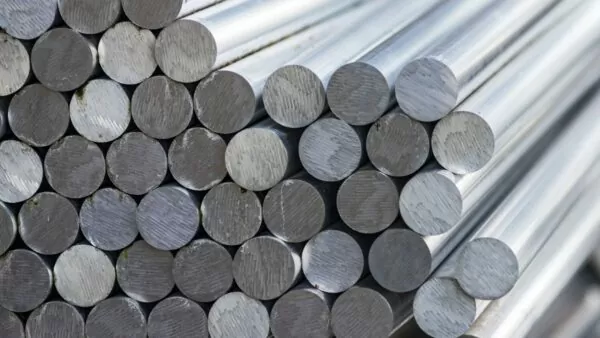
After looking at stainless steel, let’s shift our focus to aluminum as an option for metal patio furniture. Like stainless, aluminum also is lightweight and durable, making it suitable for a wide range of applications in the outdoors. Aluminium is known for its resistance to corrosion due to oxidation but, because this process happens differently in each environment within the home, it can sometimes be hard to anticipate how aluminium will behave outside. To err of the side of caution, many homeowners opt to treat aluminum with an additional layer of protection such as an epoxy paint to give the furniture extra resistance against the elements.
Others may debate that painting aluminum with an additional protective layer isn’t necessary and that treating aluminium with a salt spray test is enough to ensure it stands up to mother nature. The National Sanitation Foundation (NSF) often uses a salt spray test as part of its certification process by exposing products to 100 hours of continuous salt-fog followed by visual inspections. This method assesses the corrosion resistance based on how well the product withstands exposure from salty elements like sea breezes.
When choosing metal patio furniture, deciding between stainless steel or aluminium for your outdoor space mostly comes down to lifestyle preference and how one looks compared to the other – though both can provide good results if appropriate precautions are taken for long term use. Each material has its own unique look and feel; whereas aluminium tends towards being lighter in color and has emphasized grain markings, stainless steel offers up a sleek modern look. Ultimately, selecting outdoor furniture depends on your style and budget needs so it’s important to review all metallic options before deciding which one is the best material for outdoor furniture.
No matter what material you choose, transitioning your indoor lifestyle outdoors doesn’t have to be stressful when there is zinc furniture around the corner waiting for you! As mentioned before, zinc provides exceptional rust prevention due to its protective layer of patina when exposed to air and water however cost vs durability is something else worth considering when selecting metal patio furniture.
Wrought Iron
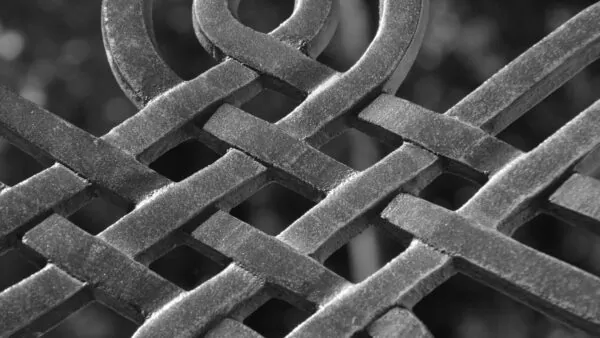
Wrought iron is often the first material that comes to mind when people think of metal patio furniture. It has a classic look, with its curved designs and intricate detailing. Since it’s made through a process of shaping heated iron into desired shapes, it’s quite durable and can last a long time even with exposure to the elements. On the other hand, wrought iron does have some drawbacks as well. It doesn’t typically fare well in coastal settings as it tends to rust rather quickly in areas that are frequently exposed to moisture and salt air. Additionally, wrought iron requires regular maintenance such as painting or powder coating to protect it from corrosion which can be time consuming and costly.
If you’re after that classic look that’ll never go out of style, then wrought iron is the way to go! It’s tough as nails and can withstand all kinds of weather without rusting away. With just a bit of TLC, your wrought iron furniture will look stunning in your outdoor space for years to come.
Not only does it add a touch of old-school charm to any decor style, but it’s also a real workhorse when it comes to durability. You can bet your bottom dollar that this stuff will stand up to whatever Mother Nature throws its way!
So if you want something that’s both practical and stylish, then wrought iron is the bee’s knees. Just make sure you give it some love every now and then to keep it looking its best!
Corrosion Resistance & Weather-Proofing Considerations
When looking at metal patio furniture, corrosion resistance and weather-proofing are key considerations. Wrought iron can add a classic look to any outdoor area, but it is prone to rust and decay over time due to its exposure to the elements. More modern materials like aluminum or stainless steel offer superior corrosion resistance, making them great choices for those who want durable furniture that lasts for years.
When considering stainless steel in particular, there are two factors to consider: thickness and grade. Thicker gauge stainless steel is less prone to corroding over time because it has superior strength and has greater galvanic protection from exposure to water or other elements. The grade of stainless steel is also important; Grade 304 is the most popular choice for outdoor use as it contains higher levels of chromium which provides superior corrosion resistance.
If weight is an issue for your outdoor space then aluminum may be a worthwhile option since it’s one of the lighter metals used for outdoor furniture. Aluminum naturally forms an oxidation layer when exposed to air and this barrier helps protect against rust and other damages. With proper maintenance and regular cleaning with a mild soap and water solution, aluminum furniture can last many years without corroding or needing to be replaced.
No matter which material you choose, one thing is certain: proper care and maintenance must be taken in order to ensure maximum weather-proofing of your patio furniture. Regularly cleaning the surface with a mild cleaner or polish can help prevent scratches and rust spots while applying protective coats (such as wax) can help minimize color fading from sun exposure. Taking these steps will go a long way towards helping extend the life of your metal furniture.
Corrosion-Resistant Finishes
When shopping for metal patio furniture, corrosion-resistant finishes are an important consideration. Corrosion, or rust, can both accelerate the wear and tear of your outdoor furniture, and discolor it. Therefore, opting for corrosion-resistant finishes is an important factor when choosing the best material for your outdoor space.
One approach to achieving a corrosion-resistant finish involves using electroplating or anodizing. This is where a thin layer of metal is applied to the surface of the raw material. Anodized aluminum is popular because aluminum has a natural resistance to weathering and corrosion due to its oxide layer that seals in the metal and prevents further oxidation. Copper is also another popular choice due to its long history as an effective corrosion resistant finish. The drawback to copper is that it can darken over time due to exposure to moisture and air, which some may find undesirable for their outdoor space.
Another option for outdoor furniture with anti-corrosive characteristics is acrylic enamel paints, which are often used on steel designs. The paint provides a protective layer over the metal, preventing oxygen from entering and causing corrosion. While this process does add additional cost, it’s well worth it if you want your patio furniture to look brand new longer.
No matter what approach you take when looking to protect your outdoor furniture from corrosion-related damage, one thing is certain: it’s definitely worth making sure your patio furniture has some form of protection against corrosive elements in order to make sure it don’t wear out too quickly!
Strength & Durability Considerations
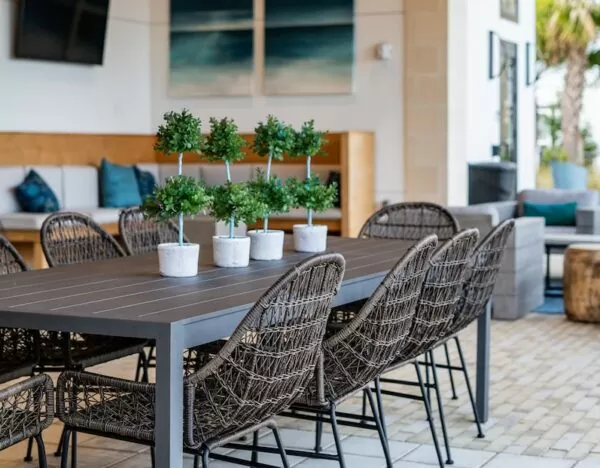
When it comes to strength and durability, metal patio furniture is the clear choice. For example, wrought iron furniture can last for years with proper maintenance, while aluminum and steel patio furniture are ideal for heavy wear-and-tear environments. While some skeptics may think that metal can become weakened or break over time, the truth is that with proper care, your outdoor space will remain in use for years to come.
However, it’s important to note that while metal patio furniture may be extremely durable, certain types may require more upkeep than others. In particular, wrought iron furniture must be repainted periodically to prevent corrosion and rust. Steel and aluminum patio furnishings require less maintenance as they usually have a corrosion-resistant finish already applied. Therefore it’s important to consider your lifestyle when choosing which material is best for your outdoor space.
Regardless of the material you choose for your outdoor space, ensuring a sturdy base is essential for preventing any potential damages caused by unexpected weather conditions like strong winds or heavy rains. For example, stability feet attached to the base of chairs or tables helps prevent them from tipping over in windy conditions. Therefore, apart from considering the materials strength and durability, you should also consider how well designed the piece is in order to reap its full benefits year round.
To sum up, with thoughtful selection and proper care and maintenance, high quality metal furniture pieces can be an attractive addition to any outdoor space – offering strength and longevity without compromising style. That said, it’s also important to remember that each type of metal has its own unique properties that must be taken into account when selecting your furniture options.
Cost vs Maintenance-Free Metal Options
After considering the key strengths and durability considerations of metal patio furniture, it’s important to also look at how cost may influence the decision. There are pros and cons to both budget-friendly options and higher cost, yet maintenance-free pieces. Budget-friendly metal patio furniture typically requires periodic painting or staining to keep it looking its best in outdoor conditions. In addition, rust or corrosion can occur if the furniture is exposed to full-sun exposure for long periods of time – meaning it needs regular upkeep such as sanding and repainting. Yet this type of maintenance can be done at home, making it a more cost effective option in the short term.
By investing in higher priced yet maintenance-free materials can provide peace of mind in terms of longevity, thus making it a budget-conscious choice in the long run. Examples of some maintenance free materials include powder coated aluminum and stainless steel. These metals are resistant to corrosion and won’t need any added care outside of an occasional light washing with mild detergent and hose water spray. Although these pieces may be more expensive upfront, they will last longer, thus saving you money in the long run on replacements or repair costs.
Carefully weighing both sides of this argument is essential when deciding what material is best for your outdoor space – balancing up front costs against upkeep costs could have a big impact on your bottom line throughout the life of your patio furniture.
Design & Construction Considerations
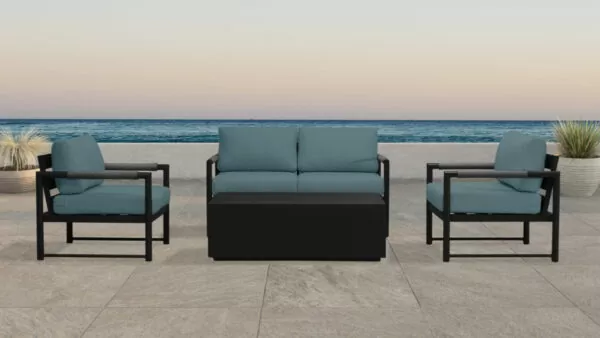
When it comes to selecting metal patio furniture for your outdoor space, design and construction considerations are of the utmost importance. These must be carefully weighed against cost vs maintenance-free metal options, as the wrong selection can end up costing you more in the long run.
You will want to consider the overall aesthetic you’re hoping to create in your outdoor space and select pieces that fit into that design. For example, wrought iron is a classic style often used in garden patios and terraces. Aluminum is a more modern look that’s popular with contemporary designs. Steel can provide a middle ground between these two options by providing both traditional designs while remaining lightweight and weather durable.
In terms of construction quality assurance is paramount. Be sure to ask questions about the origin of the material, welding technique, galvanizing process (if applicable) as well as paint type and thickness. Asking these questions upfront can ensure that your outdoor furniture will last for years to come. Additionally, paying close attention to weight ratings is also important if purchasing patio furniture that swings or rocks as it can affect safety.
When debating cost vs maintenance-free metal options there are pros and cons to each side of the argument. Those who support less expensive metals such as aluminum tend to argue its lightness makes it easier to move around for rearranging or storage during inclement weather, its malleability makes it suitable for curved designs, and its non-porous surface prevents rust formation which eliminates maintenance needs altogether. On the other hand, those who prefer more expensive metals like wrought iron contend that its greater durability actually lasts longer than aluminum despite potential maintenance needs; additionally they point out its heavier weight reduces chances of it being moved or stolen while its natural patina gives it an antique charm that adds extra character and value over time. Ultimately there’s no right or wrong choice when it comes to selecting metal patio furniture – only what’s best suited for your personal needs in terms of design, construction quality assurance and cost vs maintenance-free considerations.

Todd is a co-owner of Patio Productions and has worked extensively in the furniture industry since 2002, when he started a company that designed and manufactured bathroom vanities. He now has a hand in all online business operations, including keeping tabs on industry trends and making sure Patio Productions remains an innovative leader in the outdoor furniture space. He lives just outside of Denver, Colorado with his wife, two boys, and two dogs. They live on a lake where they can make the most of the outdoor lifestyle. His favorite patio furniture sets are his Harmonia Living sectionals.

